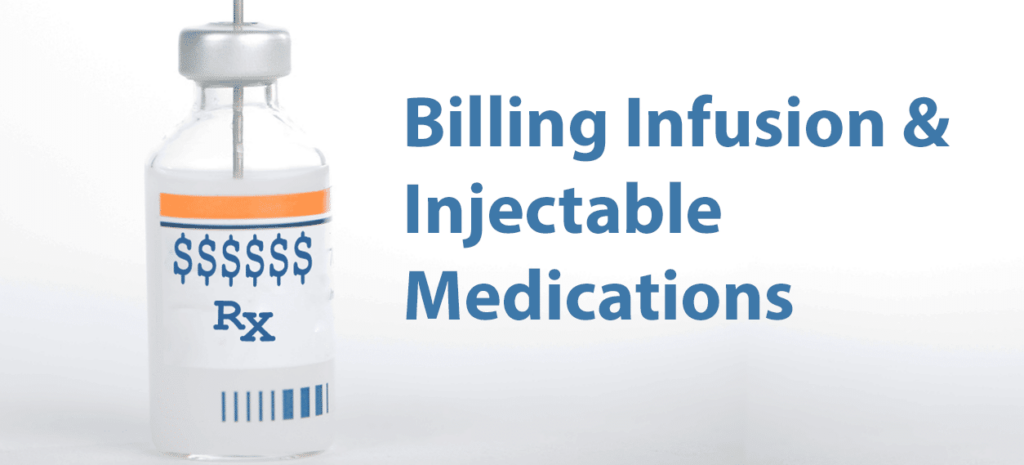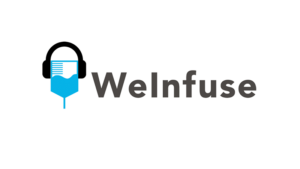Next to quantum theory, I would put infusion and infusion billing in a close second place for complexity. I recently published an article around billing for infusion procedures in an attempt to simplify some of the confusion. If you missed my first installment The Confusion of Infusion Billing, it’s worth going back and taking a quick glance to understand where I am coming from.
If you have mastered infusion administration billing, then you are ready to move on to billing for the infusion and injection medications themselves. While not a walk in the park, I find that billing for the medication part of the claim follows a more logical process than the administration time.
Disclaimer
First, I will restate my disclaimer from the last billing article…Everything I will describe here is based on the medical benefit, fee-for-service billing methodology. In no way am I wandering into hospital outpatient (HOPD / OPPS), ambulatory surgery, home infusion, or any other class of trade. For Medicare billing, this conversation falls under Part B. This guide should apply to provider offices offering in-office infusions and injections as well as stand-alone Infusion Centers billing under the medical benefit in place-of-service 11. I will focus primarily on non-chemotherapeutic treatment billing as that is my area of experience to date.
Background
When billing medications, we use HCPCS codes (I pronounce it “hicks picks” ) which stands for Healthcare Common Procedure Coding System. I like how simple that sounds, but there is nothing simple about it. The 2017 HCPCS Level II book is over 2lbs and contains 417 double-sided, small-print pages. We affectionately call these HCPCS codes “J-Codes” as most of them start with a “J” and some less often with “Q” or “S”.
I don’t have time here to go into the hows and whys of the coding system we have to date, just know that anytime you are billing for medications you are likely using one of these HCPCS codes and that they are updated and published annually.
Getting Started
Billing medications, for me, is always the third step of the billing process for a single patient treatment.
- Step 1 Make sure I have the right patient, insurance, date of service, diagnosis codes, etc.
- Step 2 Identify the billing codes and units for the procedure/administration portion of the visit. (covered in article 1)
- Step 3 Identify and bill for the medication part of the treatment.
Identify the “Billable” Medications
Medicare and insurance companies don’t pay for much outside of the actual procedure and medication that is administered so you have to know exactly what can and what cannot be billed. Identifying the billable medications is almost always limited to non-oral medications that are administered through a needle. They also usually exclude IV fluids and diluents used to mix/prepare the medication(s). IV Fluids are only billable if Hydration is the main reason for the patient visit and IV Fluids are the ONLY product being administered for the date of service. IV Fluids used to mix-in or dilute medications are considered incidental to the treatment and are not separately billable.
When identifying medications, you will need to be careful to pick the correct HCPCS code. Since many medications have generic versions, it is common to have multiple Brand or Generic medications share the same code. For example, the medications Zometa and Reclast, which are now both generic alternatives, share the same code J3489 (zoledronic acid) even though they are slightly different preparations and are used for different diagnoses.
There are many free tools available to help you look up the correct HCPCS codes. Some workflow systems, WeInfuse for example, automatically identify the correct HCPCS code based on the inventory selected and documented in the nurse’s treatment note. A reliable online HCPCS resource I recommend is from AAPC here: (https://www.aapc.com/codes/)
Identify any Specialty Pharmacy / Manufacturer Free “White-Bagged” Medications
Medications that are provided free of charge to your office are never billable. These medications are delivered patient-specific from specialty pharmacies and also from manufacturer free drug programs.
Although these medications are not billable, most payers and Medicare require you to show them on medication claim lines with a $0.01 charge. If you do not include the medications on your claims, the payer may not pay for the administration time that is billed.
Identify and Calculate the “Billing Units” for each Medication
For HCPCS/medication billing, each code has a “Billing Unit” and “Billing Unit of Measure” (UOM). For example, The HCPCS code for Remicade is “J1745”, the Billing Unit is “10”, and the Billing UOM is “mg”. Not all medications come in a single size vial. Because of this and some other reasoning, I don’t understand, the billing units for a medication is often a different amount than the amount contained in the actual vial, syringe, or bag. Using the same Remicade example, the Remicade billing unit is 10mg even though the Remicade vial is 100mg. Therefore, a single Remicade 100mg vial contains 10 billing units.
Identifying the Code and Billing Units for each medication will be most of your work in getting the patient’s claim ready to bill.
Identify “Wastage” amounts
No one likes waste, but for many specialty medications, wastage is common and even expected. It would not be fair for your office to buy a whole vial and only get paid for part of it, so Medicare and other payers have developed a method to report wastage so your office gets paid for all the medication used on a patient’s treatment. In the non-pharmacy setting, when dealing with single-dose vials, the office cannot share a vial with other patients or save the excess medication for another day. Wastage is expected and encouraged as a matter of patient safety.
Be sure and identify not only the vials used in the treatment but also any wastage documented by the nurse.
For our Medication Billing Example, let’s look at the Following Treatment Scenario:
- Remicade 750mg given IV over 2 hours and 31 minutes
- Inventory Used:
- Buy&Bill
- 8 vials of Remicade 100mg
Following the steps from earlier, Step 1 is to make sure that we have the right patient, insurance, date of service, and diagnosis codes (ICD-10) in our billing software. For Step 2, we identify and code the administration time. For this example, we have 1 unit of 96413, and 2 units of 96415. For Step 3, we bill for the medication by identifying the medication HCPCS code and billing units and calculating the number of billable units.
Billing unit calculation:
- Remicade 750mg / Billing Unit 10mg = 75 billing units
Next, we identify any documented wastage. Since each Remicade vial is only available as a 100mg vial, the nurse should have used 8 vials for a total of 800mg.
Wastage Calculation:
- Remicade used 800mg (8 x 100mg vial) – 750mg dosage = 50mg wastage
- Wasted Remicade 50mg / Billing Unit 10mg = 5 billing units (wasted)
When billing wastage, we use the same HCPCS code and place it on another line on the claim as shown in our example below. Medicare and most payers now require a modifier of “JW” on the wastage line to indicate wastage.
REMICADE EXAMPLE CLAIM BILLING:
ITEM DESCRIPTION | CODE | UNIT | MODIFIER |
|---|---|---|---|
| Infusion, Initial Hour | 96413 | 1 | |
| Infusion, Add’l Hour | 96415 | 2 | |
| infliximab (Remicade) | J1745 | 75 | |
| infliximab (Remicade) | J1745 | 5 | JW |
Had this been a Specialty Pharmacy or Manufacturer Free Drug treatment, the billing would be the exact same, but with a $0.01 charge on the medication, lines to show which medication was given, but not expected to be reimbursed.
Let’s Look at a More Complex Treatment Scenario:
- Actemra 624mg given IV over 1 hour
- Inventory Used:
- Buy&Bill
- 3 vials of Actemra 80mg
- 1 vial of Actemra 400mg
Billing unit calculation:
- Actemra 624mg / Billing Unit 1mg = 624 billing units
Wastage Calculation:
- Actemra used 640mg (3 x 80mg, 1 x 400mg) – 624mg dosage = 16mg wastage
- Wasted Actemra 16mg / Billing Unit 1mg = 16 billing units (wasted)
ACTEMRA EXAMPLE CLAIM BILLING:
ITEM DESCRIPTION CODE UNIT MODIFIER 96413 1 J3262 624 J3262 16 JW
Infusion, Initial Hour
tocilizubmab (Actemra)
tocilizubmab (Actemra)
Coming Soon! – NDC Billing
Everything we have covered here is concerned with the traditional HCPCS billing methodology. There are many payers who now require, in addition to the HCPCS billing, that the claim also includes the NDC billing methodology. NDC stands for National Drug Code and the NDC is a 10 or 11 digit number printed on all medication vials to uniquely identify the medication, manufacturer, and vial size/strength. NDC billing is not simply the process of documenting the NDC of the medication on the claim line. It involves yet another complicated set of codes and units. Stay tuned for my next billing article that will cover NDC billing in detail.
Conclusion
The key to becoming a great infusion biller is having a clear understanding of how to put everything together. Having a solid set of available reference resources is a must so you can find the medication codes and billing units you need quickly and accurately. Having a sophisticated software solution that automatically handles these lookups for you is ideal. We, of course, recommend WeInfuse.
Like anything else in life, nothing can replace practice and experience when it comes to mastering infusion and specialty injectable billing. If you take your time, pay attention to detail, and double-check everything, you may have what it takes to bill these high-dollar and cutting-edge medications.
WANT TO LEARN MORE ABOUT WEINFUSE?
If you would like to learn more about how our WeInfuse software application can help “Take the Confusion out of Infusion” for your in-office infusion suite or standalone Infusion Center, click here to request a demonstration and let’s start a conversation about how WeInfuse can help you and your team Infuse Better.
Disclaimer: This is a guide and is no way intended to be formal billing advice. You must consult your CPT and HCPCS manuals and/or other applicable reference materials.




